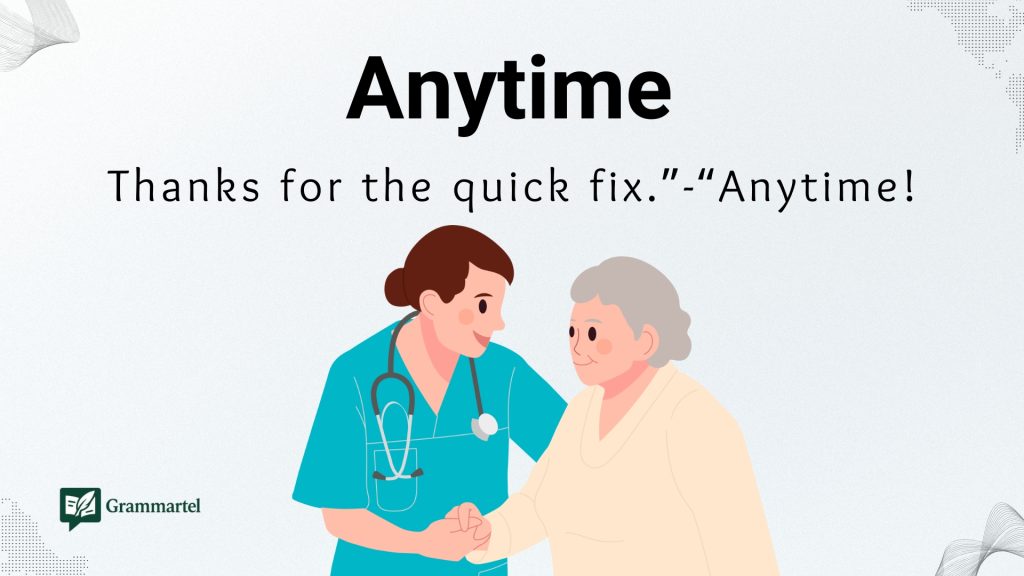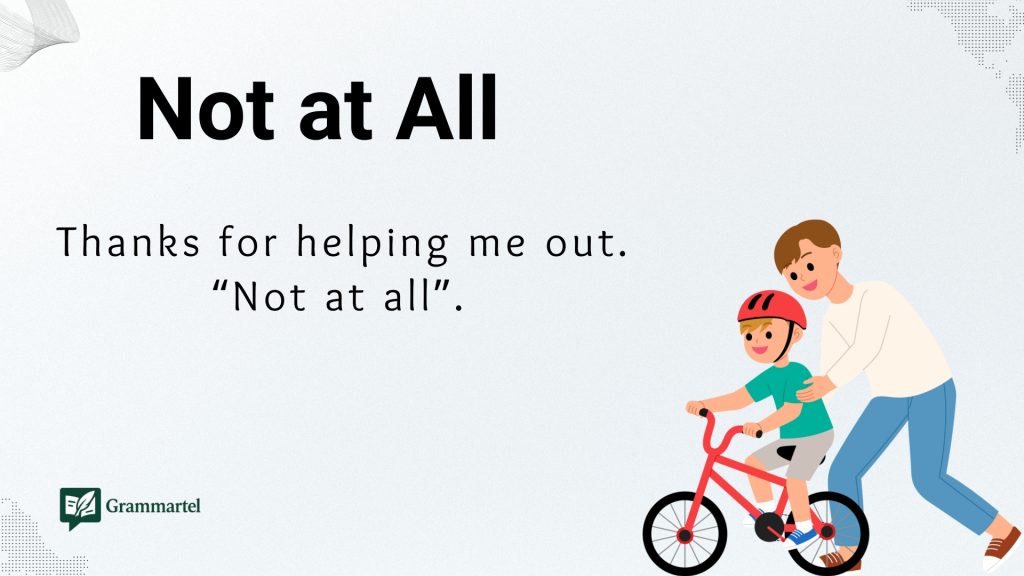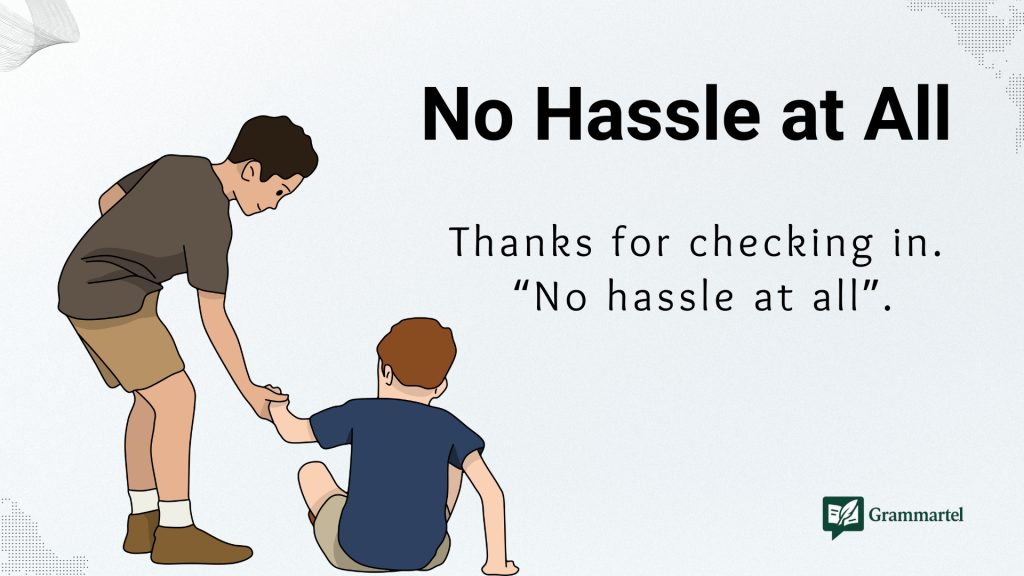Sometimes a simple “Happy to help” can brighten someone’s day more than you think. It’s more than just a polite reply—it’s a warm gesture that shows kindness and connection. Whether it’s for work, friends, or even strangers, finding different ways to say it keeps your responses fresh and genuine. A thoughtful reply can make conversations feel more personal. So why stick to the same phrase every time? Let’s explore heartfelt, creative ways to express that you’re glad to lend a hand—each with a little personality and warmth.
What Does “Happy to Help” Mean?
“Happy to help” is a polite way of saying you’re glad you could assist someone. It shows kindness and willingness without sounding formal. This phrase makes people feel valued and appreciated.
When to Use “Happy to Help”
You can use it after someone thanks you. It works in emails, casual talks, or professional settings. Use it with friends, customers, coworkers, or anyone you support. It’s best when you want to sound friendly yet respectful. This short reply keeps conversations warm and positive.
40 Heartfelt Ways to Say “Happy to Help”
1. Anytime

Meaning: You’re always willing to help.
Explanation: Suggests openness to future help too.
Example: “Thanks for the quick fix.” — “Anytime!”
Best Use: Casual chats with friends or coworkers.
Worst Use: Formal business emails.
Tone: Warm, casual.
2. No Problem
Meaning: Helping was easy for you.
Explanation: Shows you didn’t feel burdened.
Example: “Thanks for your guidance.” — “No problem.”
Best Use: Friendly or informal talk.
Worst Use: Formal client communication.
Tone: Relaxed, friendly.
3. Glad I Could Help
Meaning: You’re happy you were useful.
Explanation: Adds a personal touch.
Example: “You saved me so much time!” — “Glad I could help.”
Best Use: Casual or semi‑formal exchanges.
Worst Use: Very formal situations.
Tone: Warm, friendly.
4. My Pleasure
Meaning: You enjoyed helping.
Explanation: Shows genuine willingness.
Example: “Thanks for your support.” — “My pleasure.”
Best Use: Customer service, professional settings.
Worst Use: Very casual texts.
Tone: Polite, professional.
5. Always Here for You
Meaning: You’re always available to help.
Explanation: Offers ongoing support.
Example: “Thanks for answering my question.” — “Always here for you.”
Best Use: Supportive friendships or close client relationships.
Worst Use: Distant or formal relationships.
Tone: Caring, personal.
6. Don’t Mention It
Meaning: Your help wasn’t a big deal.
Explanation: Makes the other person feel comfortable.
Example: “Thanks for staying late.” — “Don’t mention it.”
Best Use: Casual workplace or personal settings.
Worst Use: Formal or high‑stakes situations.
Tone: Relaxed, friendly.
7. Of Course
Meaning: Helping was natural for you.
Explanation: Suggests willingness without hesitation.
Example: “Thanks for explaining that.” — “Of course!”
Best Use: Friendly or neutral situations.
Worst Use: Cold formal emails.
Tone: Light, positive.
8. Happy Anytime
Meaning: You’ll help whenever needed.
Explanation: Keeps the door open for future help.
Example: “Thanks for your advice.” — “Happy anytime.”
Best Use: Supportive conversations.
Worst Use: Highly formal replies.
Tone: Warm, approachable.
9. It Was Nothing
Meaning: The help didn’t trouble you.
Explanation: Downplays the effort to be polite.
Example: “Thanks for covering my shift.” — “It was nothing.”
Best Use: Friendly interactions.
Worst Use: Very formal or serious help.
Tone: Humble, informal.
10. Always Glad to Assist
Meaning: You’re always willing to help.
Explanation: Sounds professional yet warm.
Example: “Thanks for clarifying that.” — “Always glad to assist.”
Best Use: Professional settings, customer service.
Worst Use: Very casual settings.
Tone: Polite, professional.
11. You’re Welcome
Meaning: A standard polite reply to thanks.
Explanation: Simple and widely understood.
Example: “Thanks for your help.” — “You’re welcome.”
Best Use: Any setting—formal or casual.
Worst Use: None, it’s universal.
Tone: Neutral, polite.
You Might Also Like : 40 Polite Ways to Say “Sorry for the Inconvenience” (With Examples).
12. Sure Thing
Meaning: Confirms your willingness.
Explanation: Light, casual, and friendly.
Example: “Thanks for the backup.” — “Sure thing!”
Best Use: Casual work chats, friends.
Worst Use: Strict professional settings.
Tone: Friendly, informal.
13. Not at All

Meaning: It was no trouble at all.
Explanation: Polite way to downplay your effort.
Example: “Thanks for helping me out.” — “Not at all.”
Best Use: Polite conversations, semi‑formal situations.
Worst Use: Very casual slangy chats.
Tone: Respectful, calm.
14. No Worries
Meaning: It’s not a big deal.
Explanation: Friendly reassurance.
Example: “Thanks for explaining the process.” — “No worries.”
Best Use: Casual talks, friendly workplaces.
Worst Use: Formal emails or big client deals.
Tone: Relaxed, approachable.
15. All Good
Meaning: Everything is fine.
Explanation: Shows you’re comfortable helping.
Example: “Thanks for the last‑minute change.” — “All good.”
Best Use: Informal talks, colleagues you know well.
Worst Use: Serious or formal replies.
Tone: Casual, light.
16. That’s What I’m Here For
Meaning: Helping is part of your role.
Explanation: Shows readiness to support.
Example: “Thanks for guiding me.” — “That’s what I’m here for.”
Best Use: Work settings, customer service.
Worst Use: Very personal matters.
Tone: Supportive, professional.
17. No Trouble at All
Meaning: Assures it wasn’t hard for you.
Explanation: Polite and calming.
Example: “Thanks for checking this for me.” — “No trouble at all.”
Best Use: Semi‑formal chats, work calls.
Worst Use: Texts with friends (can sound stiff).
Tone: Polite, slightly formal.
18. It’s All Good
Meaning: Everything’s fine.
Explanation: Similar to “No worries,” but more casual.
Example: “Thanks for helping out last minute.” — “It’s all good.”
Best Use: Friendly environments.
Worst Use: Formal conversations.
Tone: Relaxed, informal.
19. I’m Glad It Worked Out
Meaning: You’re happy with the result.
Explanation: Focuses on the outcome, not just the help.
Example: “Thanks for showing me that fix.” — “I’m glad it worked out.”
Best Use: Professional or casual settings.
Worst Use: Quick text exchanges.
Tone: Supportive, thoughtful.
20. It’s Nothing, Really
Meaning: Your help wasn’t a big effort.
Explanation: Makes the other person feel comfortable.
Example: “Thanks for doing this.” — “It’s nothing, really.”
Best Use: Polite, semi‑formal chats.
Worst Use: Highly formal or corporate emails.
Tone: Humble, kind.
21. It’s No Big Deal
Meaning: The help wasn’t a burden.
Explanation: Shows the effort was small for you.
Example: “Thanks for staying late.” — “It’s no big deal.”
Best Use: Friendly or relaxed workplace chats.
Worst Use: Formal or corporate replies.
Tone: Casual, laid‑back.
22. Always Happy to Assist
Meaning: You’re glad to help anytime.
Explanation: Sounds professional and kind.
Example: “Thanks for explaining that.” — “Always happy to assist.”
Best Use: Business emails, client service.
Worst Use: Very casual texts.
Tone: Polite, professional.
23. I’m Just Glad I Could Help
Meaning: You’re happy your help mattered.
Explanation: Adds warmth and sincerity.
Example: “Thanks for sorting that issue.” — “I’m just glad I could help.”
Best Use: Friendly or semi‑formal chats.
Worst Use: Quick, short exchanges.
Tone: Warm, genuine.
24. I Was Happy to Do It
Meaning: Helping was a pleasure.
Explanation: Adds a personal, warm tone.
Example: “Thanks for your time.” — “I was happy to do it.”
Best Use: Semi‑formal, friendly conversations.
Worst Use: Very short or fast chats.
Tone: Kind, personal.
25. No Hassle at All

Meaning: It didn’t cause you trouble.
Explanation: Keeps the mood light.
Example: “Thanks for checking in.” — “No hassle at all.”
Best Use: Friendly or semi‑formal settings.
Worst Use: Very formal emails.
Tone: Casual, friendly.
26. I’m Always Here if You Need Me
Meaning: Offers ongoing support.
Explanation: Expresses reliability and care.
Example: “Thanks for your advice.” — “I’m always here if you need me.”
Best Use: Personal or supportive work relationships.
Worst Use: Formal client settings.
Tone: Caring, warm.
27. It Was My Pleasure
Meaning: You enjoyed helping.
Explanation: Sounds polite and genuine.
Example: “Thanks for your help.” — “It was my pleasure.”
Best Use: Professional or polite conversations.
Worst Use: Casual chats with close friends.
Tone: Respectful, professional.
28. Not a Worry at All
Meaning: There’s nothing to stress about.
Explanation: Similar to “No worries,” but softer.
Example: “Thanks for clarifying that.” — “Not a worry at all.”
Best Use: Friendly talks, supportive workplaces.
Worst Use: Highly formal replies.
Tone: Gentle, reassuring.
29. It’s the Least I Could Do
Meaning: You wish you could do more.
Explanation: Adds humility.
Example: “Thanks for your help.” — “It’s the least I could do.”
Best Use: Friendly or heartfelt situations.
Worst Use: Formal business talks.
Tone: Warm, humble.
30. I’m Glad I Was Able to Help
Meaning: You’re happy you were useful.
Explanation: Focuses on the outcome.
Example: “Thanks for your support.” — “I’m glad I was able to help.”
Best Use: Professional and casual talks.
Worst Use: Very short messages.
Tone: Kind, supportive.
31. No Thanks Needed
Meaning: You don’t expect thanks.
Explanation: Shows you helped willingly.
Example: “Thanks for sorting this out.” — “No thanks needed.”
Best Use: Friendly or supportive talks.
Worst Use: Formal emails.
Tone: Warm, informal.
32. Always Glad to Help Out
Meaning: You’re always ready to help.
Explanation: Adds a friendly, casual vibe.
Example: “Thanks for your time.” — “Always glad to help out.”
Best Use: Casual workplace, friendly chats.
Worst Use: Corporate or strict formal talks.
Tone: Friendly, approachable.
33. You Don’t Have to Thank Me
Meaning: Thanks are not necessary.
Explanation: Shows humility and care.
Example: “Thanks for the extra work.” — “You don’t have to thank me.”
Best Use: Personal, supportive situations.
Worst Use: Formal customer service.
Tone: Warm, personal.
34. It’s Nothing to Worry About
Meaning: The help wasn’t an issue.
Explanation: Keeps the mood light and calm.
Example: “Thanks for helping on short notice.” — “It’s nothing to worry about.”
Best Use: Friendly settings.
Worst Use: Serious or official talks.
Tone: Relaxed, kind.
Related Articles : 40 Best Ways to Say “Have a Safe Trip” (With Examples).
35. Any Time You Need
Meaning: Open offer of help anytime.
Explanation: Keeps the door open for future help.
Example: “Thanks for your advice.” — “Any time you need.”
Best Use: Supportive relationships, friendly tone.
Worst Use: Highly formal talks.
Tone: Warm, approachable.
36. It Was Easy
Meaning: Helping didn’t take much effort.
Explanation: Reassures the person you didn’t struggle.
Example: “Thanks for fixing that issue.” — “It was easy.”
Best Use: Friendly, casual talks.
Worst Use: Serious or sensitive situations.
Tone: Light, casual.
37. Glad to Support
Meaning: You’re happy to offer support.
Explanation: Works in both casual and professional tone.
Example: “Thanks for helping the project succeed.” — “Glad to support.”
Best Use: Work, professional discussions.
Worst Use: Overly casual messages.
Tone: Polite, professional.
38. No Biggie
Meaning: The help was no trouble.
Explanation: Playful, casual phrase.
Example: “Thanks for stepping in.” — “No biggie.”
Best Use: Friends, relaxed team environments.
Worst Use: Professional or formal talks.
Tone: Fun, informal.
39. That’s Fine by Me

Meaning: You’re okay with helping.
Explanation: Suggests no issue in lending a hand.
Example: “Thanks for making the change.” — “That’s fine by me.”
Best Use: Casual chats, work with familiar people.
Worst Use: Customer service or formal replies.
Tone: Relaxed, easygoing.
40. Consider It Done
Meaning: Shows confidence and readiness to help.
Explanation: Strong, positive commitment.
Example: “Thanks for handling this task.” — “Consider it done.”
Best Use: Confident work settings, team discussions.
Worst Use: Overly casual friendships.
Tone: Assertive, professional.
Conclusion
Saying “Happy to help” doesn’t have to sound routine. A little variation can make your words feel warmer and more sincere. Whether you choose a casual, professional, or playful reply, the goal is the same—to show kindness and appreciation. Small gestures like these build better connections, both in work and daily life. So, the next time someone thanks you, try one of these heartfelt replies to make it more meaningful.
Keep learning discover more with Grammartel.

